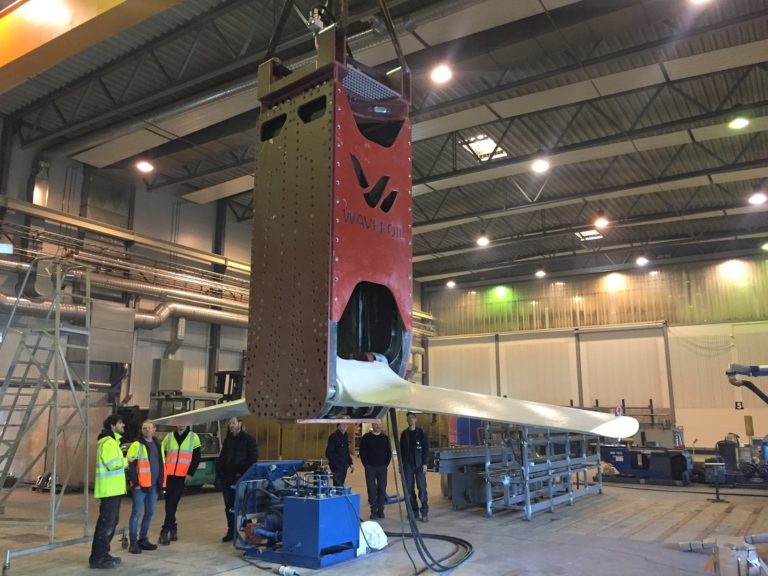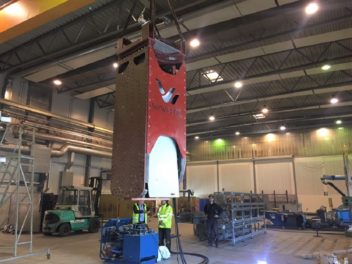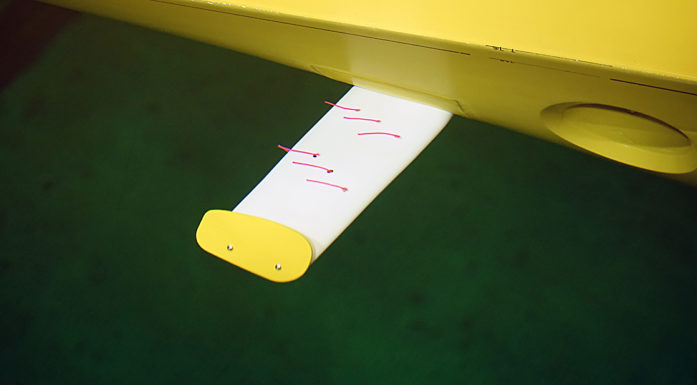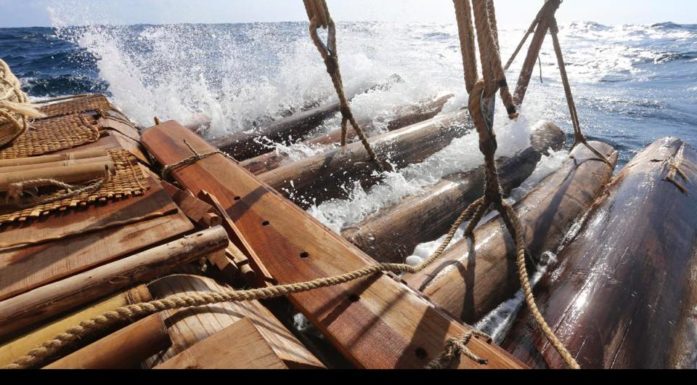Giving ferries wings to optimize wave power
The boat wings started as an unfinished idea in Eirik Bøckmann’s head. Now they’re being mounted on a ferry in the Faroe Islands.
Actually, he doesn’t call them boat wings, but wavefoils. Eirik Bøckmann won the regional finals of the NTNU Researchers’ Grand Prix with a lecture on wave-propelled ships in 2013.
The wavefoils on the front of the ship enable the waves to contribute to propelling the ship forward. This reduces fuel consumption. At the same time, the foils can dampen some of the pitching and heaving motion from the waves and provide a more comfortable journey.
The wavefoils are predicted to save about 4 per cent in fuel costs along the coastal route from Bergen to Kirkenes, which snakes its way between sheltered islands. But where there are more waves, savings of up to 15 per cent may be possible under ideal conditions. The rougher the waters, the greater the potential savings, in other words.
Article continues below photo.
Perfect fit
Now, Bøckmann is CEO of the company Wavefoil, which is turning those ideas into reality. In a construction hall at Hofstad in Trøndelag county, a six-tonne heavy-duty wavefoil module is ready to be mounted onto a ship.
Last December, Bøckmann attended Tekna’s conference for express boats and ferries. While there, he was contacted by the state-owned Faroese transport company Strandfaraskip Landsins (SSL).
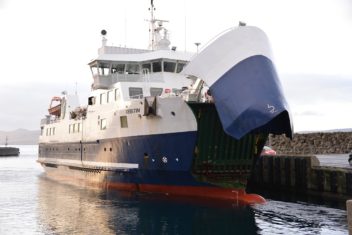
SSL’s 45-metre-long ferry M/F Teistin proved to be made to order for the pilot module. Photo: Eirik Bøckmann
“SSL’s 45 meter long ferry M/F Teistin turned out to be made to order for our pilot module. Teistin’s route sees a lot of really rough Atlantic weather come straight in from the west. Our foil module fits perfectly in the ferry’s forepeak tank,” says Bøckmann.
This was pure coincidence, but suited both parties perfectly.
Retractable bow foil
Different kinds of foils on boats aren’t completely new. Various foil designs have been experimented with since at least the 1800s.
Bøckmann’s wavefoils have changed a lot since the first models were tested six years ago. They have morphed from being large and fairly cumbersome to a smaller, manoeuvrable design that is retractable.
“We 3D-printed a scale-model foil module, with a fully functioning retraction mechanism. The results were completely in line with our expectations,” says Bøckmann.
Audun Yrke invented the wavefoil’s retractable mechanism in 2015. Yrke was already onboard when Wavefoil was founded in 2016. He finished his master’s degree the following year, but had already shown that he knew his stuff. Both Yrke and Bøckmann hail from NTNU. Sverre Steen, head of NTNU’s Department of Marine Technology, is on the board of Wavefoil. Erlend Vastveit joined in the development work last year.
- You may also like: Whale tails can make for efficient seafaring
Collaborating with Kystruten
Wavefoil has a few other irons in the fire in addition to the Faroe Island agreement. In the summer of 2018, Wavefoil conducted some model trials in collaboration with Havyard and Havila Kystruten, a coastal cruise company that will compete with Hurtigruten.
Wavefoil is also working on its own version of wavefoils for high-speed catamarans. The goal of this foil is primarily to make the boats more comfortable, rather than to save fuel.
The pilot module was unveiled on 18 March at Delprodukt in Hofstad. Now it will be transported to Fosen Yard, where the foil retraction mechanism will be tested in seawater conditions until July.
In August, the pilot module is scheduled to be transported to the Faroe Islands, and on September 1, the installation begins on M/S Teistin.
